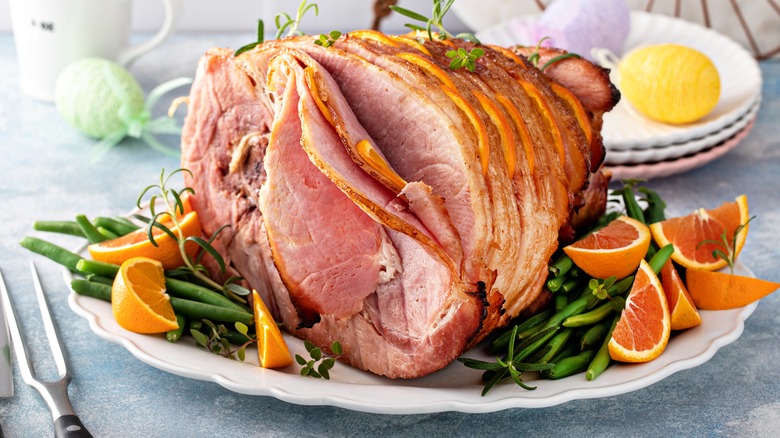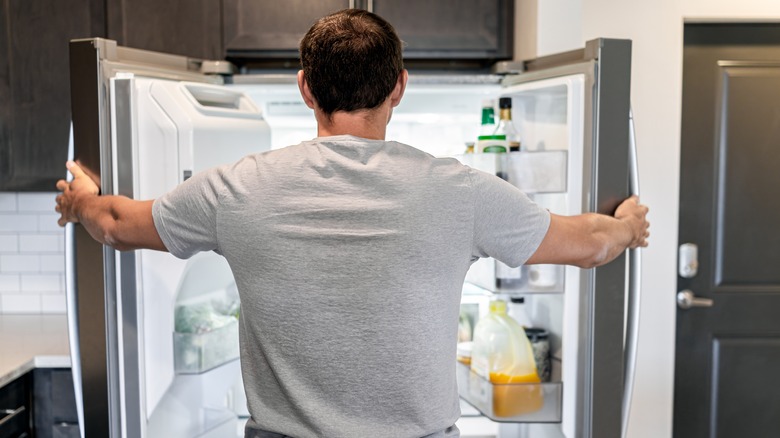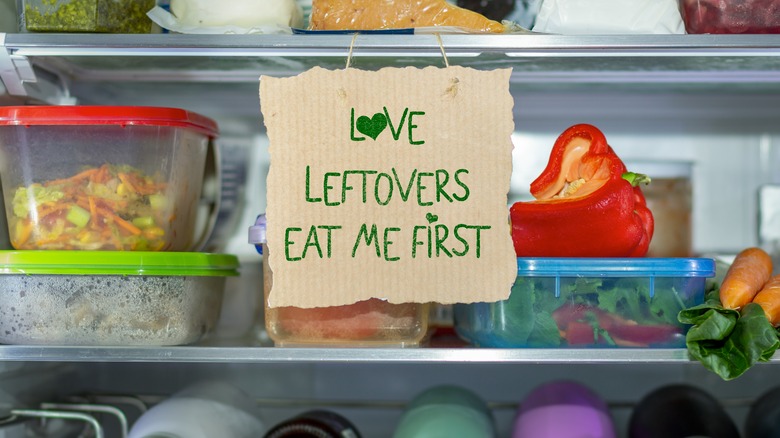How Long Is Ham Still Safe To Eat?
You've just finished a deliciously prepared dinner with a large ham as the meal's centerpiece. After spending your hard-earned money and time acquiring and cooking the ham, there's no chance you're letting those leftovers go to waste.
It's common to have leftovers, and usually a good idea, especially when following a diet. Leftovers mean you've planned ahead and will have something quick to heat up later. Leftovers from a balanced meal can be a powerful nutrition tool and often a better choice than prepackaged food. Sometimes there are too many leftovers, or something comes up, and they end up sticking around for days. This is when you may wonder, "How long does that extra ham last in the fridge after being cooked?"
It may not seem like a significant issue to wait a few extra days before getting to that ham, but it could lead to big trouble. The Mayo Clinic notes that leftovers should be kept for no more than four days. According to the U.S. Department of Agriculture (USDA), this standard generally applies to leftover ham, although certain types of leftover ham (such as cured ham, spiral-cut ham, and lunch meat ham) can last an extra day.
Once leftovers pass this recommended threshold, they risk causing food poisoning. Per Mayo Clinic, food poisoning can result in symptoms such as vomiting, diarrhea, nausea, fever, and stomach pain. Therefore, it's essential to know when that ham has taken a turn.
How to properly judge leftovers
Depending on how long the food has been in the fridge, examining it for safety may not be a pleasant experience. Unfortunately, it's an important practice that must be done before attempting to eat stored leftovers.
The first step is to examine the ham for signs of deterioration such as slime, discoloration, or mold. Mold can appear as a texture or fuzz on the food in various colors such as green, white, pink, orange-red, or black. If mold is spotted, don't open the package for closer examination or attempt to perform a smell test, as inhaling the mold can lead to respiratory issues (per Healthline). Discard any ham that shows signs of spoilage.
When there are no obvious signs of spoilage, then Healthline suggests trying to smell the ham. If there is any unusual smell, it's best to discard the food rather than risk eating it. Lastly, if the food passes the sight and smell tests, it will likely end up being tasted. These first bites are the final spoilage test and may be unpleasant if the food has gone bad. If food tastes off, regardless of the other tests or storage duration, it is recommended to stop eating it.
Safely storing leftovers
There are multiple steps to properly storing leftovers. Failing to follow any of these steps could lead to your food spoiling or deteriorating faster than you expected and going to waste. The first step is to make sure that your cooked ham is placed in the refrigerator or freezer within two hours after being cooked, or within one hour if you are outside and it is above 90 degrees Fahrenheit. This will begin the preservation process without risking the ham significantly deteriorating while sitting at room temperature (via Healthline).
Refrigeration helps keep bacteria growth at bay and extends the life of the ham. Bacteria need a certain environment to grow, but food should be resistant for a certain amount of days if the fridge is kept at the recommended temperature of 37 degrees (per Consumer Reports). If you don't plan on eating the ham within a few days, it can be placed in the freezer for up to two months for maximum quality (via the USDA). The Centers for Disease Control and Prevention (CDC) suggests dividing any large cuts into smaller quantities before storing them so that they can cool down more quickly. According to Still Tasty, whether you refrigerate or freeze the ham, it will keep best if stored in an airtight container.
Following these tips when storing your ham can ensure you have a delicious leftover option ready to go when you need it, with less chance of an unwelcome surprise.



